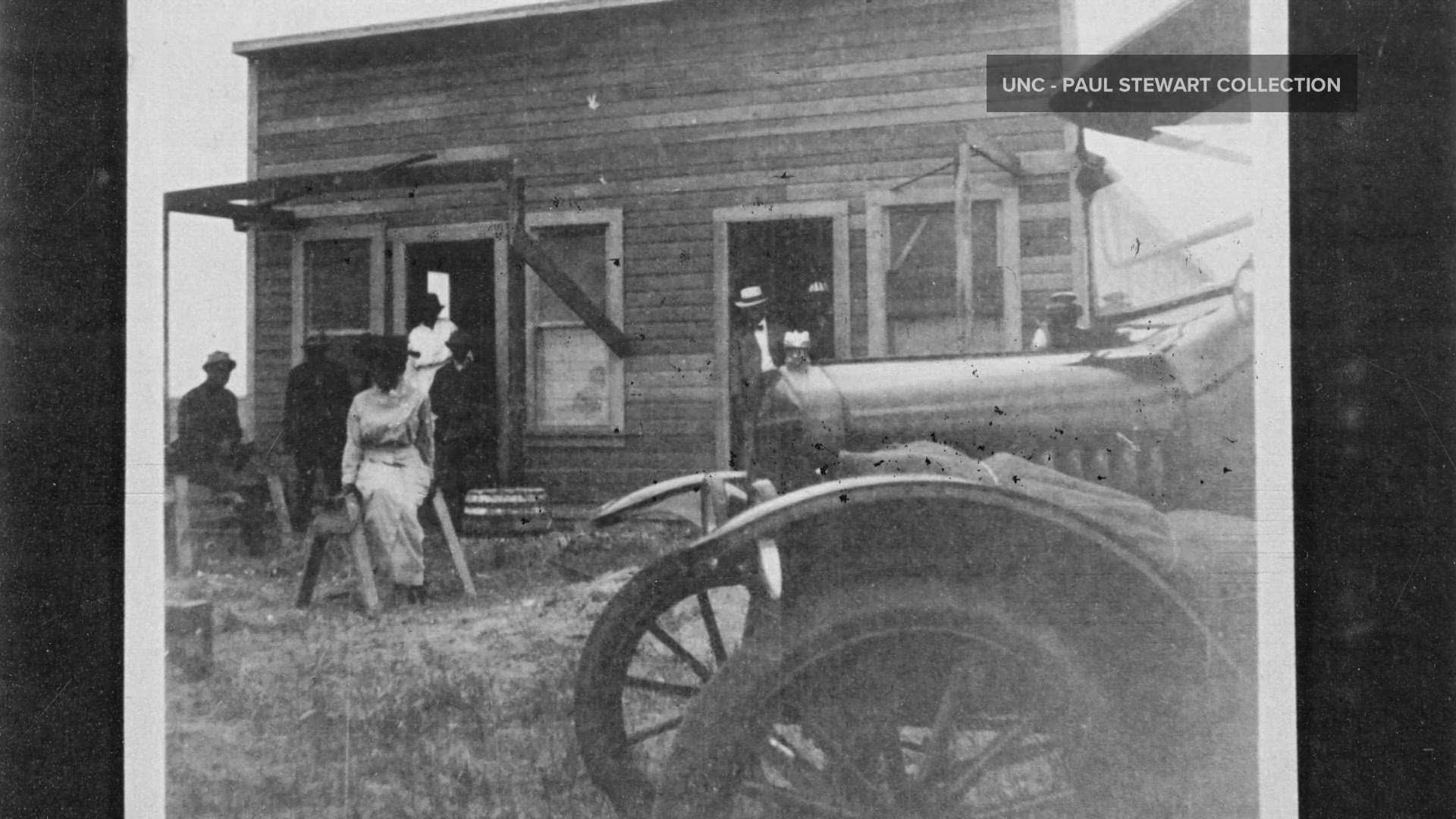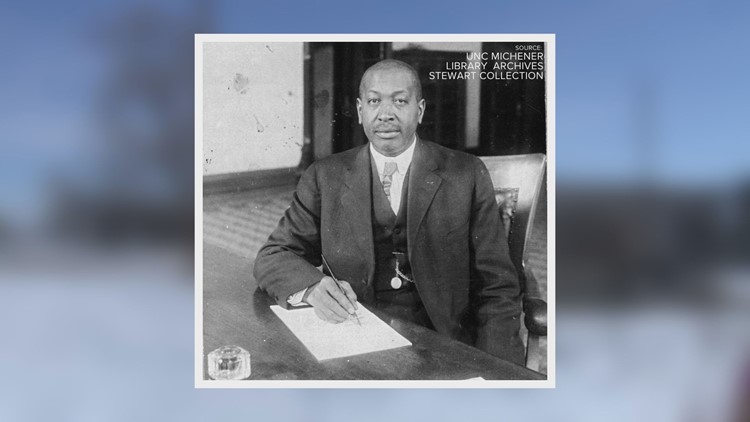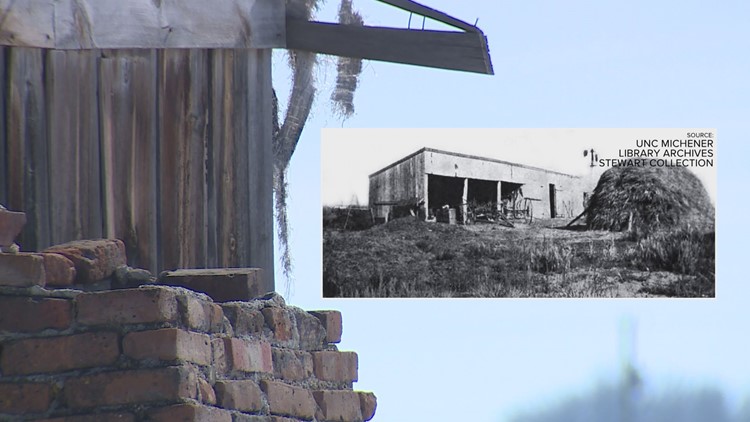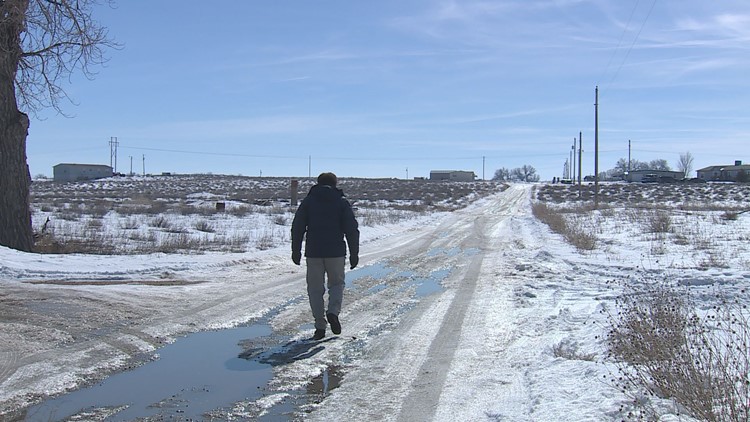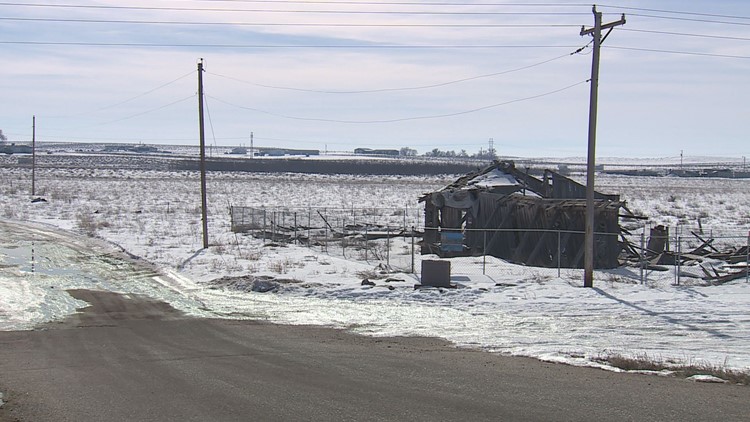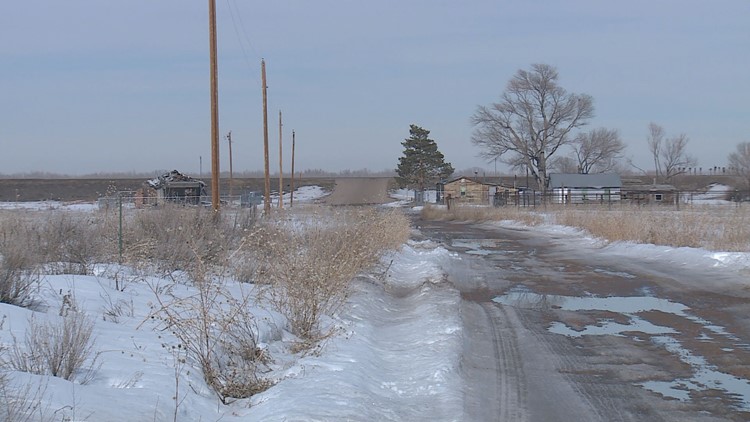WELD COUNTY, Colo. — Off US Highway 34 lies a historical settlement that is worth knowing about.
Dearfield, located around 25 miles east of Greeley, was the largest Black homesteading settlement in Colorado, according to the National Park Service (NPS).
Originally founded in 1910 by Oliver Toussaint Jackson, the settlement was one of several Black settlements that formed in the decades following the American Civil War.
"One of the important things about Dearfield was that it represented an opportunity for Black people to get land be, you know, be able to have land because there was still homestead land in that part of Weld County. And so they started farms. Many of them were very successful," said Bob Brunswig, an emeritus professor and research fellow at the University of Northern Colorado (UNC).
According to Brunswig, the settlement at its peak was able to attract upwards of 300 people who either farmed part-time and lived in Denver part-time or lived on the land in the colony itself.
"17 different states contributed Dearfield people, residents and families," Brunswig said. "It wasn't just to go out and, you know, make more land, make more profit or something like this. They were, some of them were successful businesspeople. Some of them were doctor[s], physician[s]."
"There were lawyers, there were people that had reasonably good jobs in Denver working for the telephone company, for instance," he said. "And so you had people that were very poor and people that were, for the time, were relatively well off. And so it was a really large mix of African American society up and down the Front Range and nationally. "
Preserving what's left
More than 100 years after it was settled, Dearfield has nearly fallen apart over the decades. There are only two buildings still standing at the settlement, with others torn apart over the years on the Eastern Plains.
The two buildings still standing include a filling (gas) station and the founder, Oliver Toussaint Jackson's home. Thanks to a few grants from both the state and federal governments, they appear to stay.
"The two buildings are now in the process of being completely rehabilitated. We got about, two years ago a National Park Service grant that gave us a half a million dollars to get started on that," Brunswig said. "We've done hazardous material mitigation in both of the buildings. And this summer, we're going to be putting new roofs on both buildings we're rehabilitating and replacing some of the outside walls and painting everything so that when we get done this fall, both buildings on the exterior will look like they did about 1920."
The future of Dearfield
Right now, the National Park Service is conducting a special resource study to see whether Dearfield is eligible to be added to the National Park Service portfolio.
Although public comment is a big part of the Special Resource Study that is being conducted, the National Park Service said that the site is required to meet these additional criteria points:
- National significance: Can be significant either historically, culturally or for the natural resources they possess.
- Suitability: Whether it can enhance or improve the NPS' ability to tell important stories about our nation's past and resources.
- Feasibility: Looks at land ownership patterns, public interest, and future management of the site. It also looks at whether there are threats to the site and whether the National Park Service could mitigate those threats.
- Need for National Park Service management: Looks at whether the NPS is the best entity to manage the site and whether it needs their management.
You can learn more about the Dearfield Special Resource Study and/or submit public comments by visiting the website for public comment. It's open to anyone and everyone. If you would like to do it by mail, you can send it to the following address:
National Park Service
Denver Service Center
Attn: Dearfield SRS / Charles Lawson
12795 West Alameda Pkwy
Denver, CO 80228.
All submissions must be received by Feb. 23, 2024.
What comes next?
"After that, the study team will buckle down and spend about a year evaluating those four criteria that I that I mentioned, we do them in order. If any of them fail, we would, we would complete the study earlier and submit it, and submit it to the Secretary of the Interior," said Charles Lawson at the NPS Denver Service Center.
According to Lawson, these studies do take quite some time. So, it could be a bit before anyone hears any news from the National Park Service.
"Ultimately, it'll take about a year to go through the process of developing the study and writing up the findings, having it reviewed by National Park Service leadership and our counterparts in the Department of the Interior," Lawson said. "And then we will transmit the study to the Secretary [of the Interior]. It's up to her to hand it over to Congress, and we would anticipate sometime probably in middle to late 2025. And at that point, the study findings would be made public."
The Amache National Historic Site recently celebrated its official inclusion within the NPS system. This was all thanks to a 2018 bill that brought forth a similar study to look at the feasibility of joining the National Park System back then. It's a path that people hope Dearfield will copy.
"You know about Amache and you know, the passion that that came about when [it] was created a National Historic Site, which is what Dearfield is going to be someday, we hope," Brunswig said. "That passion about history is really important, because it tells us something about ourselves."
"I am very impressed with the people that have come forward," Brunswig added. "You know, there are a lot of people that know something about Dearfield, particularly those that work and volunteer with us."
According to the NPS, the study is not binding in any way. It also doesn't necessary preclude it from being added to the NPS portfolio if there were a negative finding. The study only produces a recommendation for Congress or the president. Only they have the ability to create a national park.
Dearfield, a century-old African American settlement located in Weld County
>BELOW VIDEO: The technicalities behind the term "National Park"
SUGGESTED VIDEOS: Storytellers

